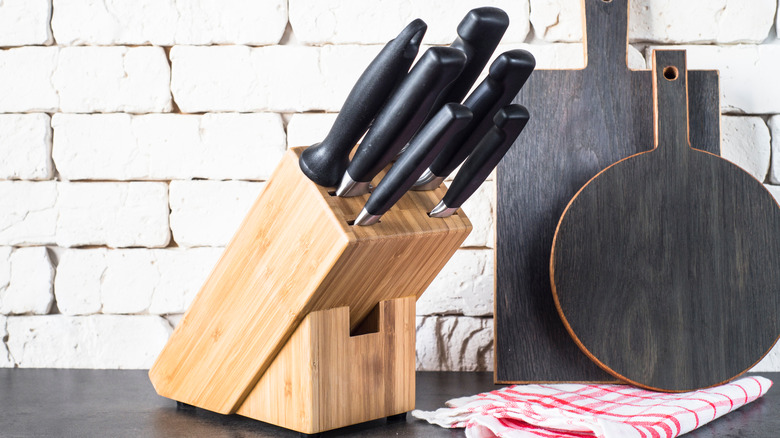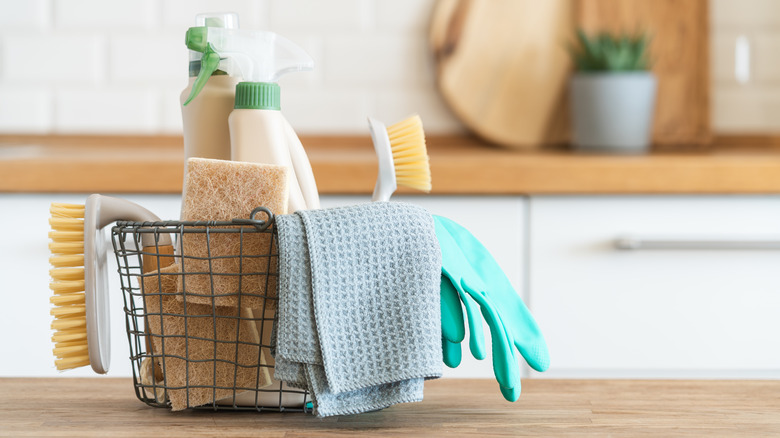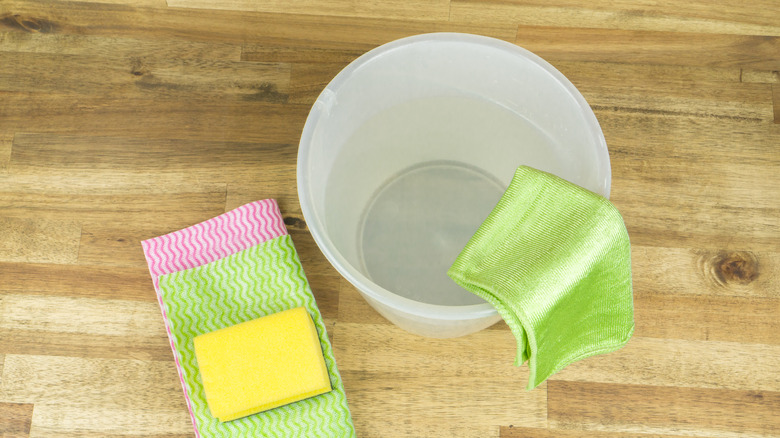How, Exactly, Do You Clean A Knife Block?
Whether you're a serious chef or an at-home cook, you'll likely agree that the experience of cooking, and eating, is way more enjoyable than the clean-up process. However, preserving your kitchen tools, such as the quintessential knife block, is a highly important step in the overall health of your kitchen.
So how do you ensure that you're actually keeping your knife block — home to your staple cooking tools — clean and tidy? The short answer is with a thorough and intentional clean. Cleansing your knife block requires a two-step process that involves a deep clean of your block's interior and exterior, followed by a full bleach sanitization. For an optimal clean, we recommend a few hard-working supplies (that you likely already have on hand), including hot water, a detergent or kitchen soap, a narrow brush, a sponge or clean washcloth, household bleach, and of course, your time and commitment to the process.
Begin with a deep cleanse
First things first: Clean the interior and exterior of your knife block. Once your block is clear of knives (and they're safely stored elsewhere), give the knife block an upside-down shake over a trash can or the sink to expel any lingering crumbs from within. From there, grab a narrow cleaning device that can fit into the individual knife block slots, such as a long brush with a flexible end, like one you would use to clean a water bottle. Use your chosen cleaning device combined with hot water, and your preferred liquid dish detergent or soap, and move slot by slot to ensure that you deep clean each one. After you've internally cleansed your knife block, be sure to give it another run under fresh water.
To tackle the exterior of your knife block, use either a sponge or a washcloth and some additional hot water and soap to cleanse the entirety of the block. In addition to cleaning the top of the block where the knives reside, scrub the sides and bottom. By disinfecting the knife block's full circumference, you prevent any lurking bacteria or yeast from permeating your kitchen.
Don't skimp on the bleach sanitization
You may be tempted to call it a day after cleaning your block inside and out, but using a bleach solvent to sanitize shouldn't be overlooked. Thanks to sodium hypochlorite, the hardworking property found in bleach, this process can readily kill unwanted germs on or within your knife block.
An ideal setup includes a container that you can fill with hot water (roughly a gallon) and bleach (approximately ⅓ cup), that is large enough to fully submerge your knife block for 60 seconds. After a minute, remove your knife block from the bleach mixture, and again run your block under clean water. Once the sanitization is over, you can breathe a sigh of relief because your hands-on work is nearly done. The final step in the cleaning process is to let your knife block dry. Find a clean, clear surface where your damp block can sit and dry overnight, then confirm that your block is fully dry before putting your knives back.
While this process is more involved than a quick wipe-down, you only really need to do a deep clean once a month or so. However, if the experience leaves you feeling inspired to disinfect, there are always more kitchen gadgets and gear to deep clean for your most sparkling (and germ-free) kitchen yet.


